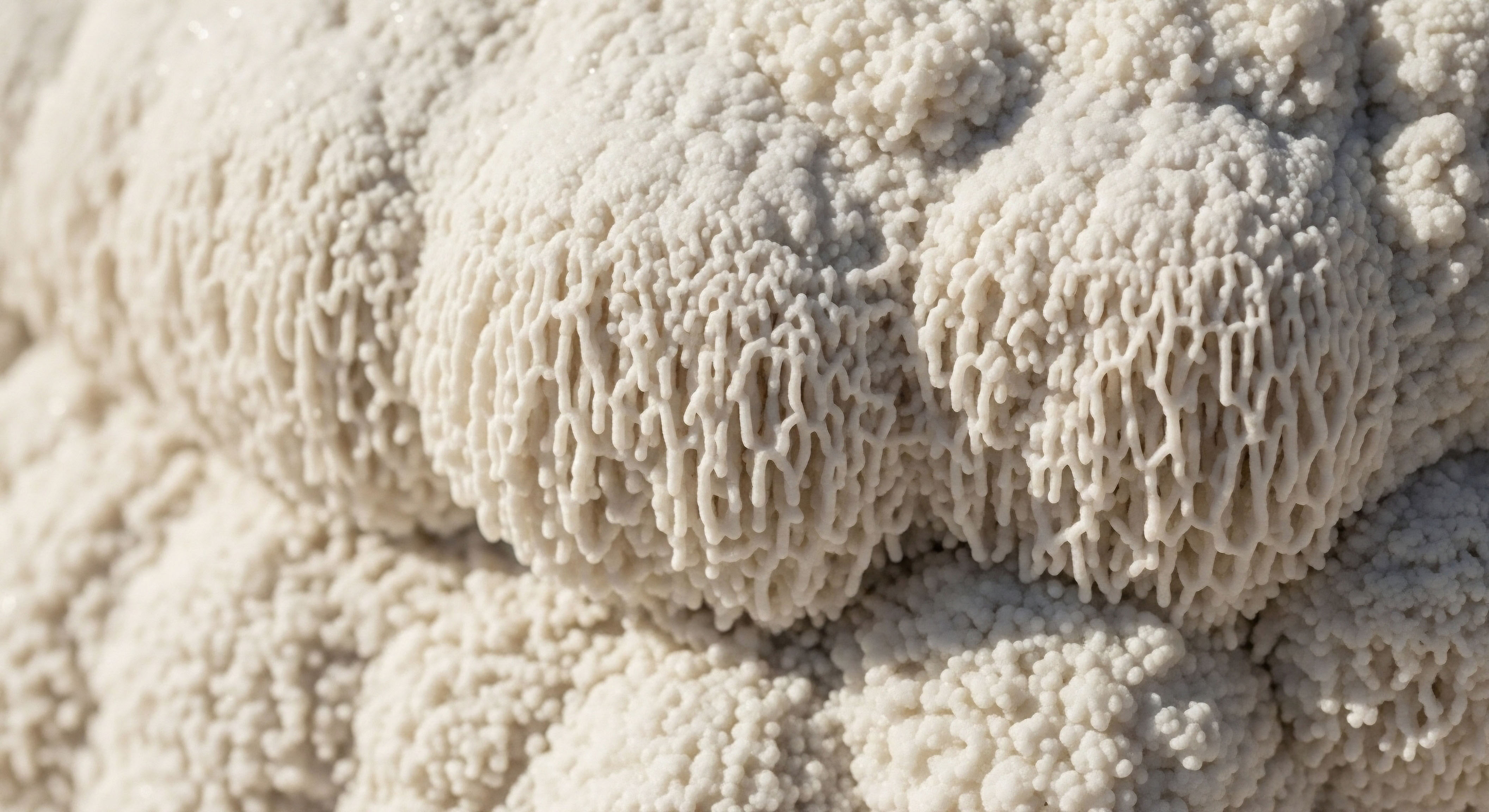

The Foundation of Chemical Mastery
The human body functions as a complex, self-regulating machine, yet most attempts at optimization begin mid-stream. The foundational error of amateur biohacking lies in targeting downstream symptoms ∞ low testosterone, stubborn body fat, cognitive drag ∞ without first auditing the master control system. That system is the Hypothalamic-Pituitary-Adrenal (HPA) axis.
The HPA axis is the central neuroendocrine engine, a three-part feedback loop that governs stress response, energy allocation, and the circadian rhythm. It connects the central nervous system’s perception of reality (Hypothalamus) to the chemical output of the adrenal glands (Adrenal). The entire structure acts as the body’s ultimate command center, dictating whether your physiology is set to a resource-conserving survival mode or a resource-expending performance mode.
Cortisol and DHEA are the primary outputs of this system. Cortisol operates as the master regulatory glucocorticoid, an essential compound for cellular signaling and immune response. DHEA (Dehydroepiandrosterone) acts as a crucial counter-regulatory steroid, providing the anabolic and neuroprotective reserve. When the axis is constantly activated by chronic, low-grade modern stress ∞ from poor sleep hygiene to financial pressure ∞ the delicate, pulsed release of cortisol is corrupted.
Chronic, non-specific HPA axis activation has been clinically linked to a 40% reduction in circulating DHEA-S, stripping the system of its primary anabolic counter-regulatory defense.
This state of chronic dysregulation establishes a systemic catabolic environment. It actively inhibits the effectiveness of every subsequent optimization protocol. Attempts to simply increase testosterone or introduce performance peptides into a system running a compromised HPA axis yield suboptimal, transient results. You cannot upgrade the engine until you have reset the command software.
The goal is to shift the HPA rhythm from a flat, high-level alarm state to a sharp, high-amplitude pulse ∞ a strong, morning cortisol peak for drive and energy, followed by a steady decline toward a low nocturnal baseline for deep restoration. This rhythm defines true vitality.


Recalibrating the Inner Command Center
The strategic restoration of HPA function requires a systems-level intervention that respects the biological hierarchy. This process begins not with a prescription pad, but with the manipulation of upstream signaling factors, particularly light exposure and sleep timing. These are the most potent, non-pharmacological levers available to reset the hypothalamic master clock.

Manipulating Circadian Drivers
The suprachiasmatic nucleus (SCN) in the hypothalamus serves as the internal clock, receiving direct input from the retina. Biohacking the HPA axis demands absolute control over light input to anchor the circadian rhythm. This directly influences the pulsatile release of ACTH, which in turn controls cortisol secretion.
- Morning Light Protocol ∞ Within minutes of waking, expose the eyes to high-intensity natural light (10,000 lux minimum) for 10-15 minutes. This sets the definitive “start” signal for the cortisol peak and suppresses nocturnal melatonin.
- Nocturnal Light Suppression ∞ Complete elimination of blue-spectrum light exposure 90-120 minutes before desired sleep onset. This allows for the natural, critical decline in cortisol that facilitates restorative sleep.

Targeted Adrenal Support and Neurotransmitter Precursors
Once the foundational rhythm is addressed, targeted chemical support can be introduced to aid the adrenal glands and the neurological components of the axis. These compounds function as sophisticated modulators, helping the system regain its ability to regulate itself.
The focus here is on compounds that stabilize the stress response and replenish the raw materials for both cortisol and its anabolic counterpart, DHEA. The correct clinical strategy involves the temporary use of specific modulators to lower the system’s stress threshold.

A Strategy for Chemical Modulation
| Intervention Category | Target Mechanism | Clinical Goal |
|---|---|---|
| Phosphatidylserine (PS) | Blunts ACTH-induced cortisol secretion. | Lowers nocturnal cortisol baseline; improves sleep depth. |
| Adaptogens (e.g. Rhodiola) | Increases non-specific resistance to stress. | Raises the stress tolerance threshold without blunting necessary response. |
| Pregnenolone/DHEA | Provides substrate for steroidogenesis; counter-regulatory support. | Replenishes anabolic reserve; protects against catabolism. |
The deepest level of intervention involves the clinical application of very low-dose, physiological cortisol replacement. This is reserved for documented adrenal fatigue, where the axis is truly exhausted. This precise intervention is designed to give the adrenal glands a period of rest, allowing them to rebuild sensitivity and capacity, rather than forcing them to produce hormones they cannot synthesize.


The Data-Driven Timing of Restoration
The only measure of success for HPA optimization is objective, quantitative data. Subjective feelings of improved energy are insufficient; the mandate is to observe a fundamental change in the neuroendocrine signaling patterns. This begins with advanced diagnostics.

Mandatory Diagnostic Baseline
The critical diagnostic tool is the four-point salivary cortisol test, which maps the circadian rhythm across a 24-hour cycle. A single morning blood draw provides insufficient data. The salivary test reveals the amplitude and slope of the rhythm ∞ the true markers of axis health. Key markers to track include:
- Cortisol Awakening Response (CAR) ∞ The sharp spike within 30 minutes of waking. A blunted CAR correlates with low drive and cognitive inertia.
- 4-Point Salivary Cortisol ∞ Mapping the peak (morning), mid-day trough, late-afternoon level, and nocturnal low.
- DHEA-S (Sulfate) ∞ The primary anabolic buffer. A low DHEA-S to Cortisol ratio signifies a high catabolic state.
- C-Reactive Protein (CRP) ∞ A systemic inflammation marker. Chronic HPA stress elevates systemic inflammation, and a successful HPA reset lowers CRP.
Restoring a healthy cortisol rhythm ∞ a steep morning peak and a low nocturnal baseline ∞ precedes significant, sustained changes in body composition and hormonal profiles by an average of 90 days.

Timeline for Performance Metrics
HPA restoration is a process of deep biological renovation, not a quick fix. Expect the following phased timeline:

Phase One Weeks One to Four
Initial symptomatic improvement, primarily in sleep quality and emotional regulation. The body begins to accept the new circadian light/dark instructions, leading to more consistent sleep onset and offset. Salivary cortisol markers may show initial movement toward a lower nocturnal baseline.

Phase Two Weeks Five to Twelve
Significant physiological shifts. The HPA axis stabilizes, allowing for downstream endocrine axes to regain function. Readers should notice increased training tolerance, improved recovery, and the beginning of favorable body composition changes (reduced visceral fat). The DHEA-S to Cortisol ratio should show measurable improvement.

Phase Three beyond Twelve Weeks
Sustained performance and vitality. The HPA axis is now functioning as a high-performance system, providing the stable foundation necessary for advanced biohacking protocols, such as peptide cycling or testosterone optimization, to yield their maximum, intended effect. The initial intervention becomes the permanent foundation for sustained peak state.

The Ultimate Performance Mandate
The journey to peak human performance is a commitment to biological integrity. Many chase the flash of a single hormone injection or a novel peptide, seeking an external fix for an internal architectural flaw. The HPA axis represents the operating system of your entire endocrine network; it determines the maximum functional capacity of every other system.
Mastering this axis is the single, non-negotiable prerequisite for all genuine, long-term vitality. It is the distinction between a fleeting performance spike and a sustained, high-output state. The architect understands the foundation dictates the height of the structure. Your HPA axis is that foundation. Control the command center, and you control your chemistry, securing your ultimate performance mandate.



